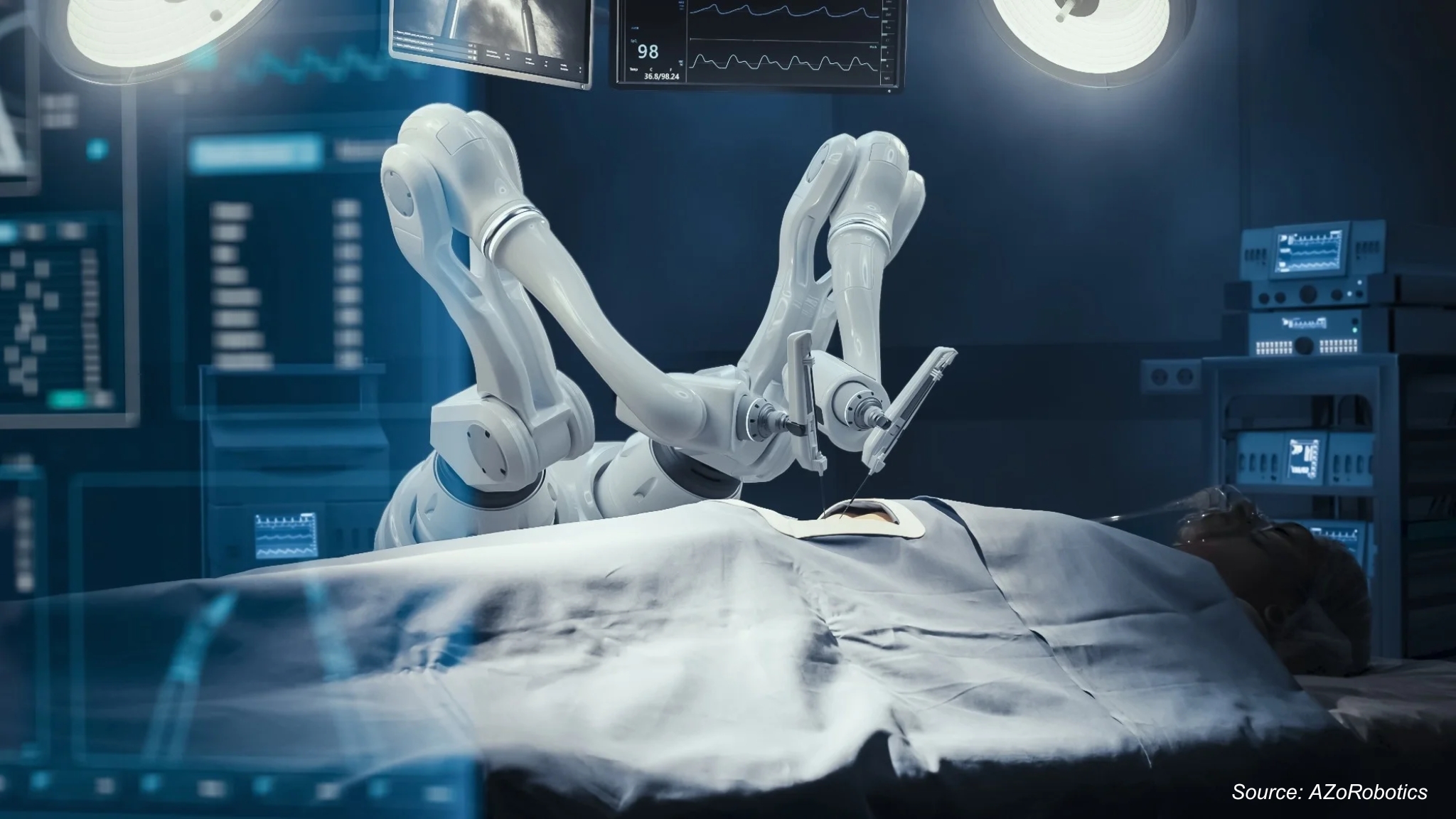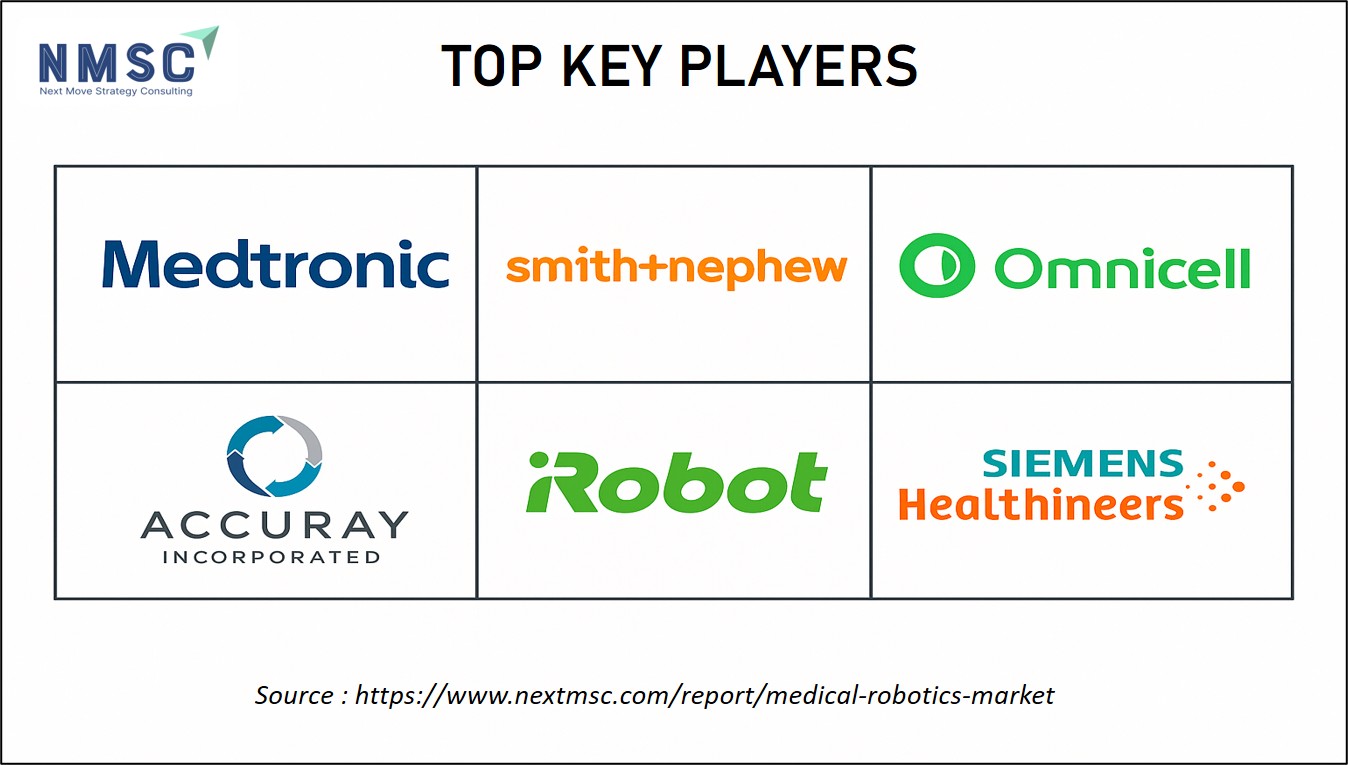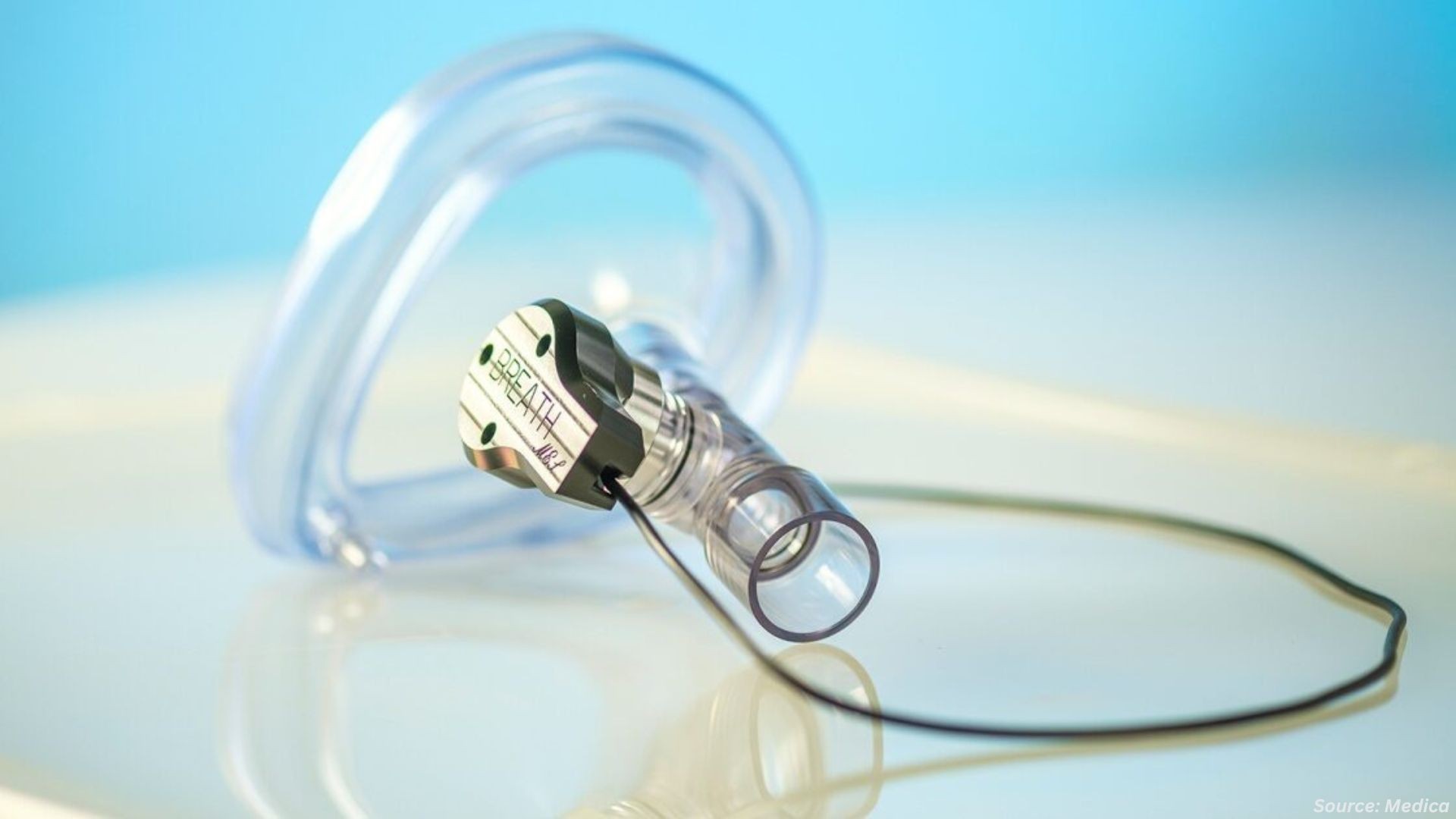Top 5 Emerging Trends Transforming the Medical Robotics Market in 2025
Published: 2025-09-10

Robots are swiftly reshaping how we live and work. From navigating hazardous environments to aiding agricultural processes, programmable machines are revolutionizing numerous sectors—and healthcare is no different. While robotics assist healthcare professionals in diagnosing and treating emerging health conditions, they are also playing a vital role in enhancing the quality of life for individuals already living with diagnosed medical issues.
1. How Artificial Intelligence Is Enhancing Robotic Surgery in Clinical Practice
Artificial intelligence (AI) is transforming nearly every facet of modern life, with some of the most groundbreaking innovations emerging in the realm of robotic surgery. This narrative review highlights recent advancements in how AI is enhancing surgical procedures, particularly during operations. AI-driven models are beginning to assist surgeons with intraoperative decision-making, such as real-time imaging analysis and instrument tracking. While technologies like force feedback and tactile sensing are under research, they aren’t yet part of standard clinical practice. Full automation of surgical steps is also still in early experimental stages.
Beyond the operating room, AI is also reshaping surgical education. By analyzing intraoperative video feeds and instrument movement data, AI systems can generate automated assessments of surgical skills. These technologies hold great potential for delivering precise, real-time feedback, helping to train the next generation of surgeons more effectively.
While the integration of AI into robotic surgery offers remarkable opportunities, it also introduces complex ethical challenges. This review explores frameworks to help navigate these issues. Overall, AI-powered advancements in robotic surgery represent some of the most exciting and transformative research currently underway in the field.
2. Robotic-Assisted Technologies in Knee Arthroplasty
The development of robot-assisted minimally invasive surgical systems is advancing rapidly and gaining widespread acceptance. These systems are now utilized across various surgical disciplines, including orthopedics, and have significantly transformed conventional surgical methods. Within orthopedic applications, knee arthroplasty stands out as one of the most common and effective procedures performed with robotic assistance.
The integration of robotic systems in knee replacement surgery offers several benefits: enhanced the precision and accuracy of surgical outcomes, facilitate reproducibility, reduce technical variability, mitigate patient discomfort, and accelerate recovery. This overview focuses on the most widely adopted and commonly used robotic platforms in orthopedic surgery, with particular emphasis on their role in knee arthroplasty. Orthopedic robotic systems are generally categorized into three main types: autonomous systems, semi-autonomous systems, and teleoperated systems.
3. Growing Adoption of Rehabilitation Robotics
Rehabilitation robotics is a research field focused on enhancing and supporting rehabilitation through the use of robotic technologies. It involves the design and development of robotic devices aimed at assisting various sensorimotor functions—such as movement of the arm, hand, leg, and ankle—as well as creating therapeutic training protocols and tools for assessing a patient's sensorimotor performance (i.e., their ability to move). In this context, robots primarily serve as therapeutic aids rather than assistive devices. Robotic rehabilitation is generally well accepted by patients and has shown modest improvements in motor function as a complement to traditional therapy, particularly for individuals with stroke-related impairments. However, current evidence indicates that while robotic therapy offers statistically significant benefits, these improvements often fall below thresholds considered clinically meaningful. This field represents a specialized area within biomedical engineering and human-robot interaction, where clinicians, therapists, and engineers work together to support patient recovery.
4. Remote Surgery and Telesurgical Capabilities
According to National Library of Medine, Using robotic technology and communications infrastructure to remotely perform surgery has been a persistent goal in medical research in the past three decades. The recent deployment of the Fifth-Generation Wireless Networks has revitalized the research efforts in the telesurgery paradigm. Offering low latency and high bandwidth communication, they are well suited for applications that require real-time data transmission and can allow smoother communication between surgeon and patient, making it possible to remotely perform complex surgeries.
All tasks were successfully completed, allowing the surgeon to operate smoothly with high-definition video from a distance of approximately 300 km. The surgeon rated the system’s usability as neutral to positive, and the video image quality was considered good. 5G networks represent a major advancement in telecommunications, delivering faster speeds and lower latency compared to earlier wireless technologies. They have the potential to act as a key enabler for telesurgery and support its continued development and adoption.
5. Virtual Reality Simulation for Preoperative Planning in Robotic Thoracic Surgery
To improve preoperative understanding of patient-specific anatomy, we developed a virtual reality (VR) surgical navigation system. Utilizing head-mounted displays (HMDs), the system offers an immersive, interactive visualization of the patient’s anatomy before surgery, with the goal of enhancing both preoperative simulation and intraoperative navigation. We incorporated 3D data from preoperative CT scans into the Perspectus VR Education software, which is viewed through HMDs to create interactive 3D reconstructions of pulmonary structures. This advanced visualization supports customized preoperative resection planning. During robotic-assisted thoracic surgery (RATS), surgeons can access these 3D models via the Tile-Pro™ multi-display system for real-time reference. Consequently, the VR system provided accurate visualization of pulmonary anatomy and lesion positioning, thereby improving surgical precision and patient safety.
Top Key Players:
-
Medtronic plc is an American-Irish (emphasis added) registered medical device company with its operational and executive headquarters in Minneapolis, Minnesota, and its legal headquarters in Dublin. Operating in over 150 countries, the company employs more than 90,000 people. It develops and manufactures healthcare technologies and therapies. Medtronic was founded in 1949 in Minneapolis by Earl Bakken, who created the first battery-powered external pacemaker.
-
Smith & Nephew plc, also known as Smith+Nephew, is a British multinational medical equipment manufacturing company headquartered in Watford, England. It is a global producer of advanced wound management products, arthroscopy products, trauma and clinical therapy products, and orthopaedic reconstruction products. Its products are available in over 100 countries.
-
Omnicell, Inc. is an American multinational healthcare technology company headquartered in Mountain View, California. It manufactures automated systems for medication management in hospitals and other healthcare settings, as well as medication adherence packaging and patient engagement software used by retail pharmacies. Its products are marketed under the brand names Omnicell and EnlivenHealth.
-
Accuray is a radiation therapy company that develops, manufactures, and sells radiation therapy systems used to deliver treatments such as stereotactic radiosurgery (SRS) and stereotactic body radiation therapy (SBRT). It is the developer of innovative technologies including the CyberKnife and TomoTherapy platforms, as well as the Radixact System, the latest generation of the TomoTherapy platform. The company is headquartered in Sunnyvale, California, United States. These platforms are installed in leading healthcare centers in approximately 50 countries worldwide.
-
iRobot Corporation is an American technology company that designs and builds consumer robots. It was founded in 1990 by three members of MIT's Artificial Intelligence Lab, who developed robots for space exploration and military defense. The company's products include a variety of autonomous home vacuum cleaners (Roomba), floor moppers (Braava), and other autonomous cleaning devices.
-
Siemens Healthineers was the first to integrate positron emission tomography (PET) with computed tomography (CT). By developing this hybrid imaging system, Siemens combined the PET scanner’s capability to visualize biological processes with the CT system’s anatomical imaging of tissues and organs. This combination enables the simultaneous display of both anatomy and biological function.
5 Game-Changing Medical Robots Enhancing Healthcare
The following five robots are transforming healthcare delivery by improving care standards and patient recovery in clinical settings.
1. The da Vinci Surgical Robot
It may be hard to believe, but over 250,000 deaths occur annually in the United States due to medical errors—many of which could potentially be avoided. While these errors span a wide range of issues, one clear solution lies in giving surgeons greater precision and control during procedures. The da Vinci® Surgical System, a sophisticated multi-armed robotic assistant, is helping address this by reducing surgical mistakes and making operations less invasive for countless patients.
Designed to enhance a surgeon’s capabilities, the da Vinci System provides high-definition, magnified 3D visuals and intuitive controls that respond to the surgeon’s wrist and hand movements. This allows for extremely precise, minimally invasive incisions that might be difficult to achieve with human hands alone. The result is greater surgical accuracy and faster recovery times for patients.
2. The Xenex Germ-Zapping Robot
In addition to reducing surgical and medical errors, tackling hospital-acquired infections (HAIs) remains a major challenge in healthcare. According to the CDC, U.S. acute care hospitals reported approximately 722,000 HAIs in 2011. These infections often arise because hospital rooms cannot always be sterilized with complete effectiveness between patients—due to time constraints or the microscopic nature of germs. For patients with weakened immune systems, this risk is especially dangerous.
Enter the Xenex robot: a mobile, automated disinfection system that sanitizes entire hospital rooms within minutes. It uses pulsed, full-spectrum ultraviolet (UV) light to eliminate a wide array of harmful bacteria, including treatment-resistant strains like Methicillin-resistant Staphylococcus aureus (MRSA). Designed to help lower the incidence of HAIs, Xenex not only improves infection control but also adds a bit of charm to hospital halls—resembling a life-saving version of R2-D2.
3. The PARO Therapeutic Robot
Unlike surgical or disinfection robots, the PARO Therapeutic Robot is not designed to save lives directly but to enhance emotional well-being during recovery. Shaped like a baby harp seal, PARO delivers the soothing effects of animal-assisted therapy without the logistical challenges of using real animals. Since therapy animals are not always available in clinical settings, PARO offers a reliable alternative.
This soft, interactive robot is commonly used with elderly patients, especially those living with dementia. Research has shown that PARO helps reduce stress and anxiety by offering companionship and comfort. It responds to its name, enjoys being petted, and gradually develops a unique personality based on its interactions. It blinks, moves its flippers, makes endearing sounds, and even “recharges” by attaching to a pacifier-shaped charger—making it as functional as it is adorable.
When the UCSF Medical Center at Mission Bay opened in 2015, it introduced 25 TUG robots to optimize internal transport. These robots are programmed with detailed floor plans and equipped with sensors that help them safely navigate busy hallways. TUGs can deliver linens, medications, meals, lab samples, and more—all while politely asking people to step aside, improving both efficiency and staff focus on direct patient care.
The Promising Future of Robotics in Healthcare
Future advancements in robotics hold the promise of enabling robots to carry out laboratory tests independently, remove arterial plaque, perform tissue biopsies, and precisely target cancerous tumors. Looking ahead, robots may also be capable of delivering localized medication, managing minor patient care tasks, and interacting with patients to assess symptoms. To fully harness these capabilities, healthcare professionals must stay informed about emerging innovations and actively seek collaborative opportunities with robotics developers. Embracing these technologies will not only enhance patient outcomes and operational efficiency but also allow medical practitioners to play an integral role in the exciting evolution of advanced robotic systems in healthcare.
About the Author
 Ankita Biswas is an experienced SEO Executive and Content Writer with 2.5+ years in digital marketing. She excels in SEO, content creation, and data-driven strategies that boost online visibility and engagement. Known for simplifying complex concepts, Ankita creates impactful content aligned with industry trends. In her free time, she enjoys reading, singing, and playing the Casio keyboard.
Ankita Biswas is an experienced SEO Executive and Content Writer with 2.5+ years in digital marketing. She excels in SEO, content creation, and data-driven strategies that boost online visibility and engagement. Known for simplifying complex concepts, Ankita creates impactful content aligned with industry trends. In her free time, she enjoys reading, singing, and playing the Casio keyboard.
About the Reviewer
 Debashree Dey is a skilled Content Writer, PR Specialist, and Assistant Manager with strong expertise in Digital Marketing. She specializes in crafting visibility strategies and delivering impactful, data-driven campaigns. Passionate about creating engaging, audience-focused content, she helps brands strengthen their online presence. Beyond work, she draws inspiration from creative projects and design pursuits.
Debashree Dey is a skilled Content Writer, PR Specialist, and Assistant Manager with strong expertise in Digital Marketing. She specializes in crafting visibility strategies and delivering impactful, data-driven campaigns. Passionate about creating engaging, audience-focused content, she helps brands strengthen their online presence. Beyond work, she draws inspiration from creative projects and design pursuits.

















Add Comment